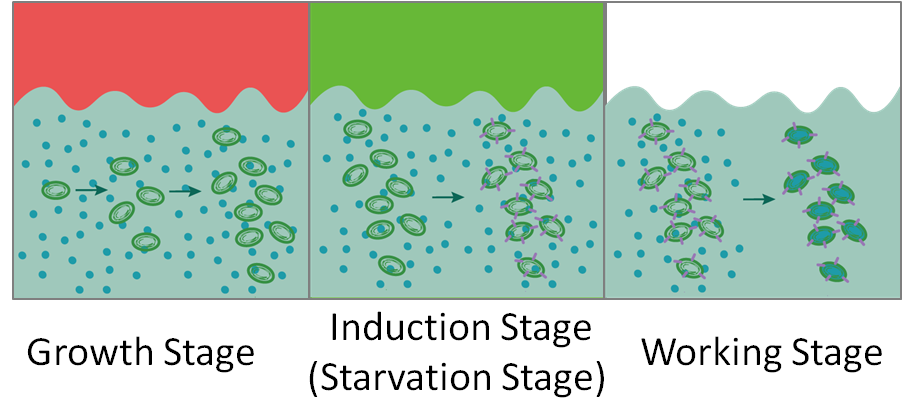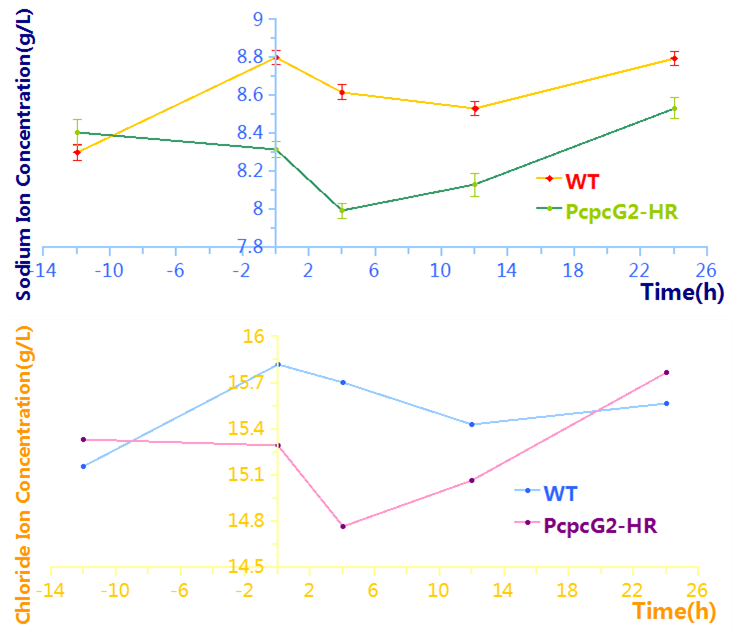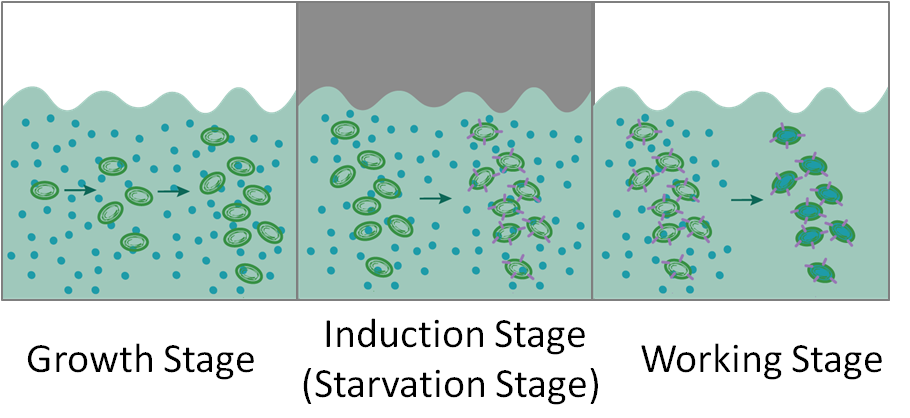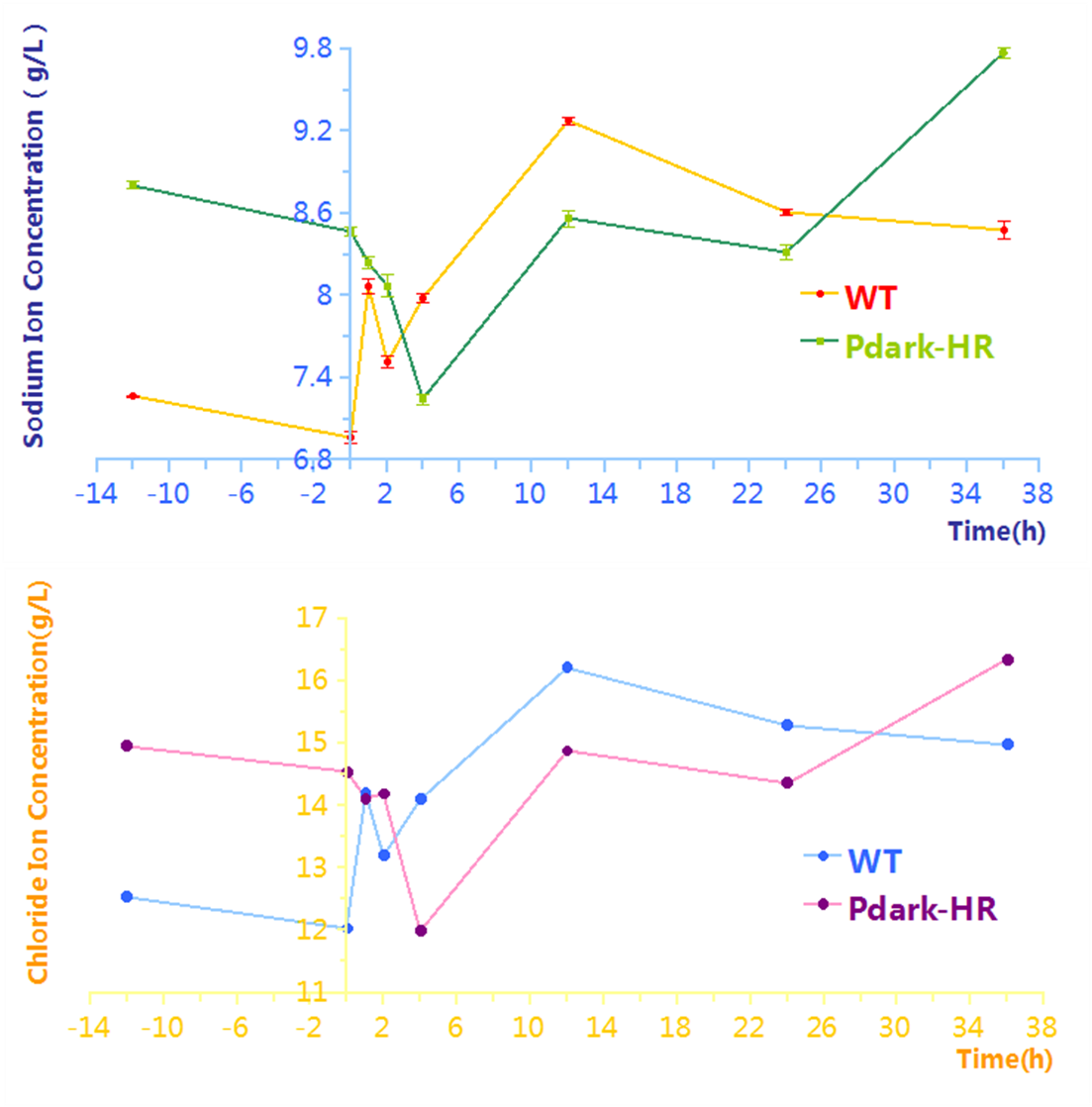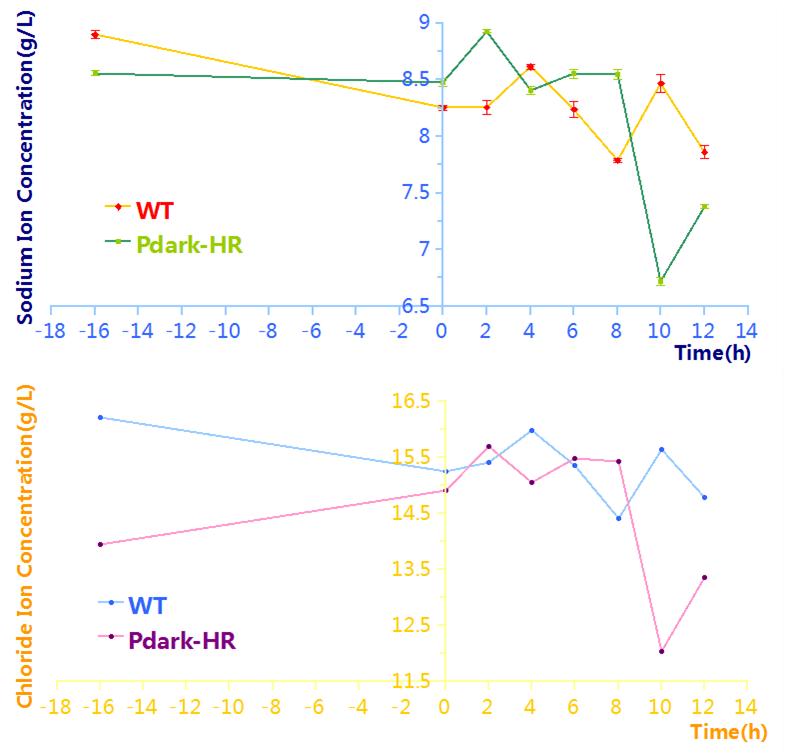Team:SJTU-BioX-Shanghai/Composite Part
Contents
PcpcG2-HR(BBa_K1642010)
Process controlled by PcpcG2
Based on PcpcG2 and halorhodopsin, we established a biodesalination system which relies on red and green light. The light colors in the three stages are red light, green light and white light respectively.
Figure 1.4.2 Biodesalination process controlled by PcpcG2.
In the growth stage, cyanobacteria absorb energy from red light and grow to a certain density; In the induction stage, green-light induces the expression of halorhodopsin, and additionally pushes cyano bacteria to starvation status; In the working stage, engineered cyanobacteria absorb sodium chloride under natural light and cyanobacteria regain energy.
Assay on PcpcG2-HR
The effectiveness of this biodesalinaion process controlled by PcpcG2-HR is proved by determination of the concentrations of extracelluar sodium and chloride or desalination assay, which are shown in Figure 3. During the early time of working stage, there is an obvious decrease of concentration compared to that of Wild-type, which indicates that our biobrick (PcpcG2-HR, BBa_K1642010) really works in cyanobacteria under this biodesalination process! The following rise of concentration can be explained by the regain of energy under natural light in the working stage. Considering that we focus on the biodesalination process controlled by Pdark, we didn’t optimize this process.
Park-HR(BBa_K1642011)
Process controlled by Pdark-HR
Based on Pdark and HR, we constructed an improved biodesalination system which depends only on the switch between white light and darkness. In the growth stage and working stage, we provide white light, while in the induced expression stage the light source is removed. Darkness leads to starvation and the starvation can inhibit active export of sodium, which is essential for biodesalination in the working stage.(described in section transport module). The biodesalination process controlled by Pdark is shown in Figure 3.
Figure 1.4.3 Biodesalination process controlled by Pdark.
In the growth Stage, cyanobacteria grow to a log-phase; in the induction stage, darkness induces the expression of halorhodopsin, and additionally pushes cyanobacteria to starvation status; in the working stage, engineered cyanobacteria absorb sodium chloride under natural light.
Assay on Pdark-HR
The effectiveness of this biodesalination process is proved by determination of the concentrations of extracelluar sodium and chloride or desalination assay, which are shown in Figure 4. During the early time of working stage, there is an obvious decrease of concention compared to that of wild-type, which proves the function of our biobrick(Park-HR, BBa_K1642011). An obvious decrease during the early time and a following rise are consistent with that of the process controlled by PcpcG2.
To figure out the limitation of desalination, we prolonged the length of the induction stage and adjusted the times of taking samples. The results are shown in Figure 5. The 6h in the working stage is approximately the minimum point.
The acquisition of the minimum point makes it possible to design a longer biodesalination process. We can extend this process by alternating induction stage (starvation stage) and working stage, make the cyanobacteria to experience starvation and regain of energy for more cycles, thus achieving more reduction of salinity. Moreover, if the length of the induction stage and working stage are approximately 12h, after growth stage this improved biodesalination system can be controlled by the natural alternation between day and night without any human intervention.
